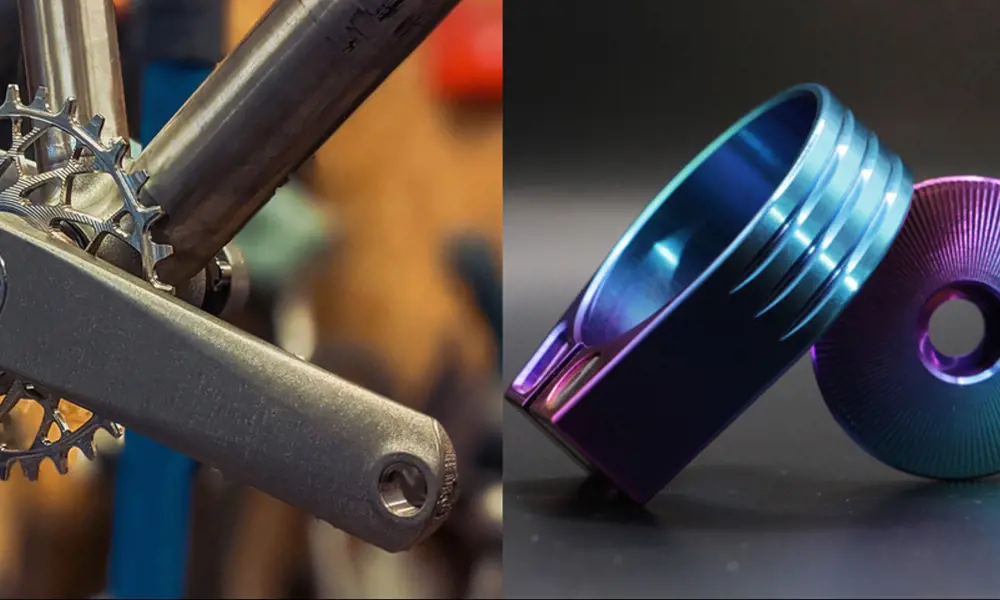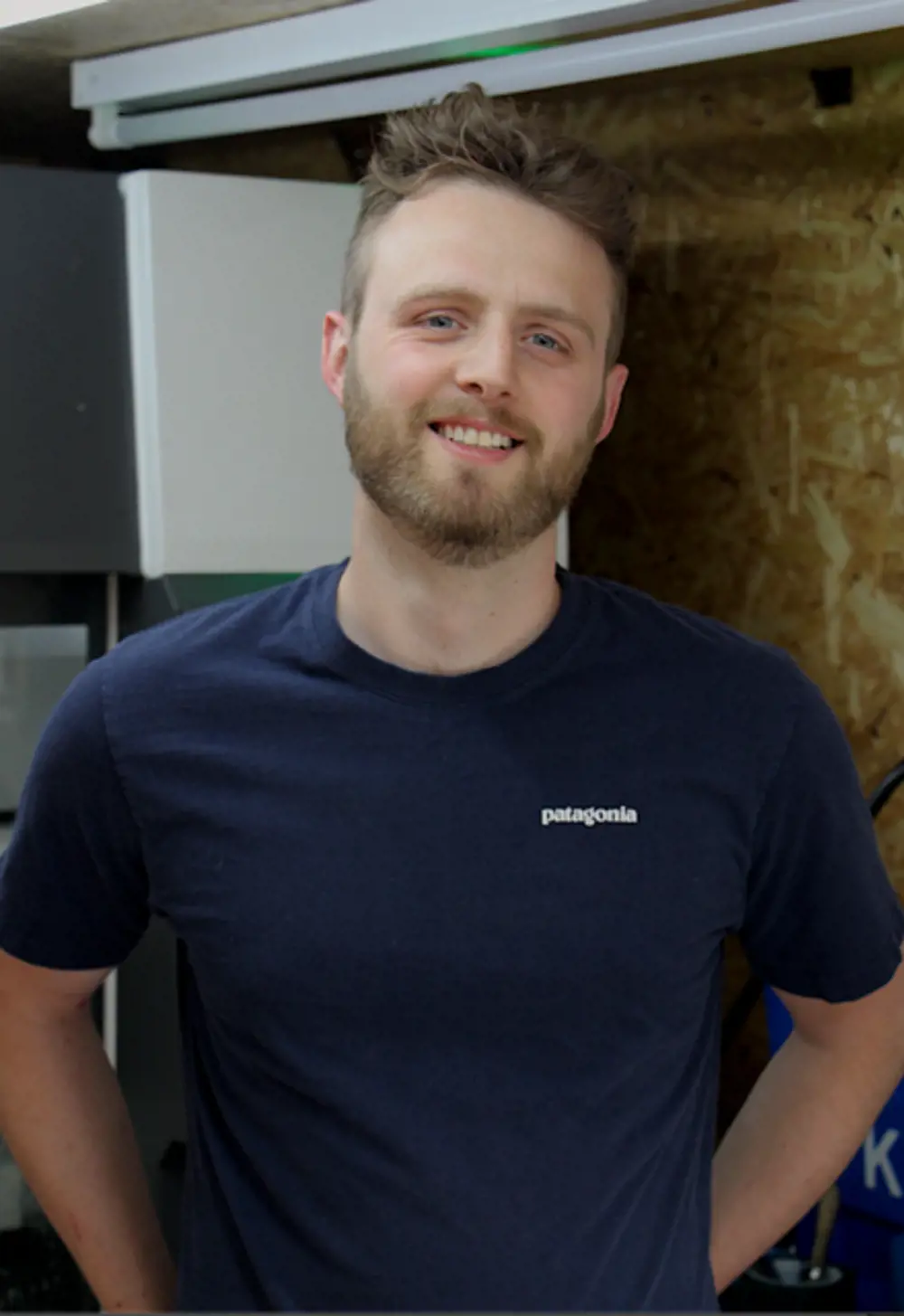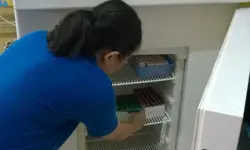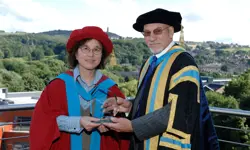
Machining titanium components
Ed Mason’s passion is to make things that he has designed himself. After graduating as a mechanical engineer, he gained on-the-job experience with manual machining, fabrication and welding at big UK engineering companies.

Ed Mason
How it started
At home, Ed started building custom steel bicycle frames, as well as making, assembling, testing, and proving bespoke parts. His aim was to design parts that would be functional, easily serviceable and of high quality. The material he settled on was titanium: it ticked all the boxes he was looking for and has an inherent durability that permits him to make parts that last a lifetime.
Titanium alloys have a high tensile strength, are light in weight and have exceptional corrosion resistance. Ed works with 6-4 titanium, a material that has titanium alloyed with small amounts of aluminium and vanadium, typically 6% and 4% respectively, by weight.
Ed set up his machine shop, Dward Design, in Bath working on subtractive machining and machine-finishing additively manufactured components. He uses subtractive machining to shape titanium billets into custom-made bicycle parts. He applies his industrial CNC machine to fulfil contracts for hi-spec cycle parts that are made into bespoke titanium bicycles for companies such as Sturdy Cycles.
Unique machining solutions for titanium
Titanium can’t be welded because of oxygen embrittlement and work-hardens very easily. It also has a thermal conductivity that results in tools heating up when working on the metal. Ed’s machining solutions, after much trial and error, lay in specific tooling and tailormade processes.
Ed’s tooling and cutting methods enable the heat generated in a cut to be carried away in the off-cuts, rather than remaining in the workpiece itself.
Ed’s tooling and cutting methods enable the heat generated in a cut to be carried away in the off-cuts, rather than remaining in the workpiece itself. Using tungsten carbide cutters enables him to achieve a higher cutting speed. He uses a strong coolant concentrate to help lubricate the workpiece, keeping the parts at a constant temperature and preventing thermal growth during machining.
Using a higher-strength material like titanium allows the framebuilder to use smaller diameter tubing for a bike than for an aluminium frame of equivalent weight. Riders say that titanium bikes have a specific ride quality over aluminium and carbon bikes. Ed sees this as a direct result of using smaller diameter tubing to reduce stiffness in targeted areas thereby allowing less of the vibration from the road to be transferred to the rider’s body.
Keeping up with increasing bike demand and future titanium applications
The last couple of years have been extremely busy for Ed. Cycling was one of the few activities allowed during the COVID- 19 pandemic and bicycle sales soared. This in turn led to a shortage of bicycles and bike parts in the UK. Lockdowns in countries that make bikes, the shortage of containers and dearth of HGV drivers has meant that the usual sources of bikes, frames and components have narrowed.
In fact, any industry that needs strong, light, corrosion-free components like performance automotive and aerospace would benefit
Ed does think that the technique he has honed could be other uses for other additively manufactured metals. He says: “I see applications for well-thought-out additive parts in semiconductor processes, where complex parts with organic geometry are required to be placed into pipework containing chemically harsh gases. In fact, any industry that needs strong, light, corrosion-free components like performance automotive and aerospace would benefit.”
***
This article has been adapted from "Innovation watch- Machining titanium components", which originally appeared in the print edition of Ingenia 89 (December 2021).
Keep up-to-date with Ingenia for free
SubscribeRelated content
Design & manufacturing

Super cool(er)
Welsh startup Sure Chill has developed a cooler that uses the properties of water to keep its contents cool for around 10 days without electricity. This is ideal for storing items such as vaccines where electricity sources are unreliable.

R&D investment makes good business sense
In just five years, Dr Ralf Speth FREng has presided over a revolution in design and manufacturing that has helped create a new family of engines and has overhauled Jaguar Land Rover (JLR) production facilities.

Steel can arise from the ashes of coal
Thousands of people were laid off in the UK steel industry in 2015 and there are pessimistic future forecasts. Professor Sridhar Seetharaman of the Warwick Manufacturing Group argues that smaller, flexible steel mills implementing new technology would better cope with fluctuating global trends.

Integrating metrology in business and academe
Professor Jane Jiang’s interest in measuring began when she worked on a bus production line in China. She found that the best way to improve quality, consistency and productivity was through metrology, the science of measurement. Today, she runs the UK’s largest metrology research group.
Other content from Ingenia
Quick read

- Environment & sustainability
- Opinion
A young engineer’s perspective on the good, the bad and the ugly of COP27

- Environment & sustainability
- Issue 95
How do we pay for net zero technologies?
Quick read

- Transport
- Mechanical
- How I got here
Electrifying trains and STEMAZING outreach

- Civil & structural
- Environment & sustainability
- Issue 95